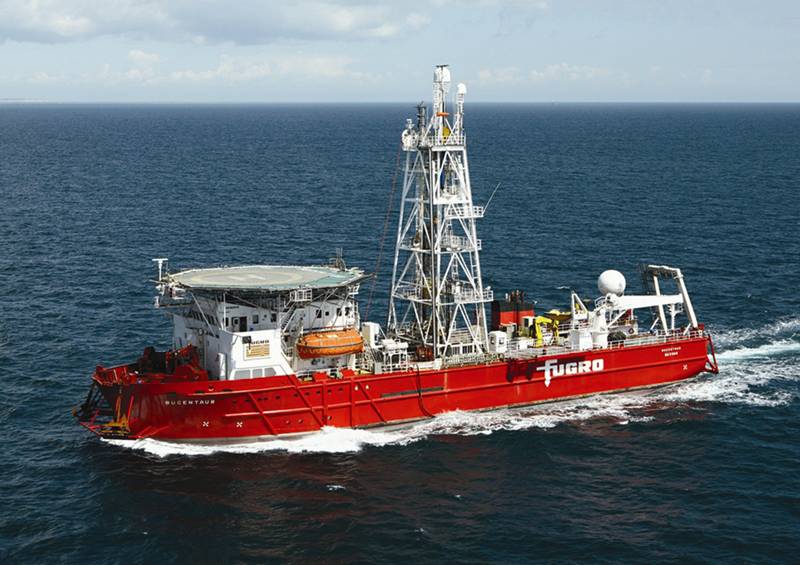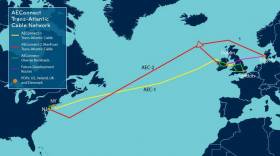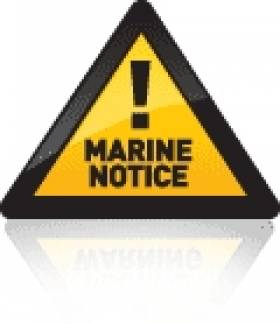Displaying items by tag: Subsea
Transatlantic Cable from New Jersey, Funded by Facebook & Google, to Come Ashore in Clew Bay
Fugro, a Dutch geotechnical, survey, subsea, and geoscience services provider, will be carrying out marine operations on behalf of TE Subsea Communications LLC (TESubCom) for the HAVFRUE Subsea Cable System Project. The project is scheduled to begin on Saturday 20th January 2018 and last for approximately 14 days (weather permitting).
Havfrue (Norwegian for Mermaid) is the brand name for the wider cable system, of which Aqua Comms will own and operate a large proportion. It is the first subsea cable system to connect Northern Europe and the US in almost twenty years. The project was commissioned by a consortium of companies that includes Bulk Infrastructure, Facebook and Google.
 The Department of Transport, Tourism and Sport has been advised that Fugro (pictured above) will be carrying out marine operations on behalf of TE Subsea Communications LLC for the HAVFRUE Subsea Cable System Project
The Department of Transport, Tourism and Sport has been advised that Fugro (pictured above) will be carrying out marine operations on behalf of TE Subsea Communications LLC for the HAVFRUE Subsea Cable System Project
Irish Submarine cable supplier and operator Aqua Comms has joined forces with TESubCom, a company specializing in fiber optic cable deployments and marine services, to prepare the groundwork for a transatlantic cable network connecting New Jersey in the US with Ireland and Denmark. At present, Aqua Comms operates Ireland’s first dedicated subsea fibre-optic network connecting New York, London and Dublin.
Aqua Comms will also market and sell capacity services on its portion of the Havfrue cable system under the brand name America Europe Connect-2 (AEC-2) as complementary to its existing transatlantic cable, America Europe Connect-1 (AEC-1), running between New York and Killala in Co Mayo. The AEC-2 cable system will complete a ring-based network connecting the US, Ireland, the UK and Denmark.
Whereas the AEC-1 cable comes ashore in Killala, Co. Mayo, the AEC-2 cable loks like it is set to come ashore in Westport Co. Mayo, which lies on Clew Bay.
 The AEC-2 Cable run into Clew Bay, Co. Mayo Source: Department of Transport, Tourism and Sport
The AEC-2 Cable run into Clew Bay, Co. Mayo Source: Department of Transport, Tourism and Sport
This system is due to come online in the fourth quarter of 2019. TESubCom has already launched the cable route survey operations.
The network will connect Dublin to Manchester and the North Sea Connect cable linking Stellium-operated data centre in Newcastle, England to Esbjerg in Denmark, creating a circular network connecting each of the above mentioned locations to one another.
Survey operations for the link to Ireland will be conducted on a 24 hour basis. Throughout survey operations the vessel will be displaying the shapes and lights prescribed in the International Rules for the Prevention of Collisions at Sea (COLREGS) Rule 27, to indicate that the survey vessel is restricted in its ability to manoeuvre.
The vessel that will undertake the project is the MV Fugro Discovery (Callsign: 3EKE6). A listening watch will be maintained on VHF Channel 16, and the vessel will actively transmit an AIS signal.
#Subsea - The Irish Times has more details on the new transatlantic subsea internet cable Hibernia Express, work on which got underway this past March.
Clearance and pre-laying work continued this month in the Celtic Sea to prepare for the arrival of the 4,600km fibre optic cable in Cork Harbour in the coming weeks.
Once connected to the new Cork Internet Exchange (CIX), it will be the first modern telecommunications cable of its kind to link North America and Europe in well over a decade.
And its speed and capacity – offering the lowest latency between New York and London – will be a boon for businesses that depend on the fastest possible and most robust data connections.
Combined with the shorter Ireland-France Subsea Cable, it's also set to make Cork a leading global internet switching centre, eliminating the need for Ireland's internet traffic to go through the UK before the rest of the world, as TechCentral reports.
#HiberniaExpress - The Department of Transport, Tourism and Sport advises that TE SubCom, on behalf of Hibernia Express, is carrying out a route clearance operation and a pre-lay grapnel run along the Hibernia Express cable route using the M/V Ile d’Aix (Callsign FICI) and M/V Atlantic Guardian (Callsign HO6566.
The operations, which follow earlier work on the same subsea cable route in March, commenced on 17 and 13 May 2015 respectively are expected to last until the end of June 2015, weather permitting.
The vessels will be towing grapnels astern at a distance depending on water depth, and as such, will be restricted in their ability to manoeuvre.
All vessels are requested to give these operation a wide berth. The project vessels will be listening on VHF Channel 16 throughout the project.
Details of co-ordinates for both vessels' work areas are included in Marine Notices Nos 18 and 19 of 2015, available to read or download HERE and HERE.


























































